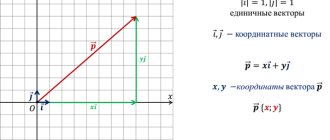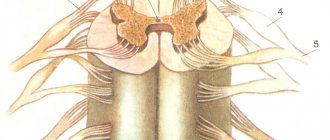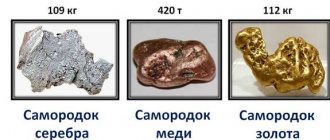Abstract and presentation for the geography lesson “Degree network. Geographical coordinates"; 6th grade
Geography 6th grade
Shiryaevsky Andrey Nikolaevich,
geography teacher
MBOU "Secondary School No. 28" in Norilsk
Topic: Geographic coordinates.
Lesson objectives:
1. Educational – study the concept of parallels and meridians on the globe, their characteristics: shape and length; learn to show lines of parallels and meridians on the globe; form an idea of the latitude and longitude of a point, geographical coordinates; teach how to determine geographic coordinates.
2. Developmental - continue the development of memory, attention, and horizons.
3. Educational - to cultivate hard work and diligence in studying the subject.
Equipment:
student globes at a scale of 1:106,000,000 (15 pieces), a wall map of the hemispheres, geography atlases for grade 6 (Drofa Publishing House), PC, multimedia projector, Power Point presentation, CD “Geography Lessons of Cyril and Methodius. 6th grade"
During the classes:
I. _ Organizing time.
II . Learning new material.
Look closely at the globe. What do you see there?
That's right, the oceans and continents are clearly visible on the globe. What else is depicted on it in the form of a thin cobweb? ( lines
)
These lines are drawn for a reason, but so that the exact location of the object can be determined. Today we will take a closer look at these amazing lines and learn how to determine the geographical coordinates of points. Slide 2 of the presentation
You and I already know that there is a line on the globe equally distant from the poles. What is it called? ( equator
).
What two parts does the equator divide the globe into? ( northern and southern hemispheres
).
Look, lines are drawn from the equator to the poles at equal distances. How do they go? ( parallel to the equator
).
Slide 2 of the presentation
Parallels are conditional lines on the globe drawn parallel to the equator.
Where on the map of the hemispheres are the parallels labeled? ( around the circumference )
.
In what units are the designations indicated? ( in degrees
). The equator is designated 00.
What shape do all the parallels have? ( circle shape
).
The equator is the longest parallel. What is the length of the equator? ( 40,000 km
).
How many degrees does a circle contain? ( 360 0 )
. This means that the length of the 10th equator is 111.3 km.
Are all parallels the same length?
The further from the equator to the poles, the shorter the length of each subsequent parallel
.
The length in 10 kilometers of each parallel is indicated on the edge of the map in an oval.
Look at the globe. Lines are also drawn from the North to the South Pole. Slide 2 of the presentation
Meridians are conventional lines on the globe drawn from one pole to another.
What shape do meridians have? ( semicircle
).
Where on the map of the hemispheres are the meridians labeled? ( at the equator
)
Are all meridians the same length? How many kilometers will it be? ( 20,000 km
). The length of each meridian 10 is 111.3 km.
But the meridians are all the same, so where can you count? Scientists agreed to consider the prime meridian to be the one that passes through the Greenwich Observatory near London, so it was called Greenwich, or prime, or zero (designated 00). There is also a final meridian, it is designated 1800. Slide 3 of the presentation
To make it easier to find the equator, prime and final meridians on the globe and maps, they are highlighted with a thicker line.
Any of you who have played a sea battle know that the playing field is divided into squares. All vertical rows are designated by letters, and horizontal rows by numbers. To determine the coordinates of the ship, it is necessary to find the intersection point of the vertical and horizontal rows.
Mathematicians have long created a surprisingly simple coordinate system (Fig. 37 p. 36 ( textbook by E.M. Domogatskikh
).
? Look at the map of the hemispheres. What lines will replace the vertical rows ( meridians
), and horizontal (
parallels
)?
Geographic latitude is the magnitude of the meridian arc in degrees from the equator north or south to a given point. Slide 4 of the presentation
Tasks.
Rice. 38 p. 37 ( textbook by E.M. Domogatskikh
)
1. Determine the latitude of Beijing (400
N. latitude)
Moscow ( 55 0 N)
Paris ( 48 0
N)
Sydney ( 32 0
S)
2. Arrange the points according to their distance from the North Pole.
a) 30o S b) 10o N c) 40o S e) 5o S
3. Determine the latitude of Cape Town and Sydney ( 32 0
S).
Is it enough to know only its latitude for a point on the map?
(
No
)
Geographic longitude is the magnitude of the parallel arc in degrees from the prime meridian east or west to a given point. Slide 5 of the presentation
The zero meridian is the meridian passing through the Greenwich Observatory near London. That's why it is also called Greenwich.
Tasks.
1. Which continents and oceans does the 80°E meridian cross?
2. What continents and countries are located in both the western and eastern hemispheres?
3. Which continent do all meridians cross?
4. Determine the longitude of Moscow (35 0
E)
Sydney (150 0
E)
Latitude and longitude are the geographic coordinates of a point on the earth’s surface. Presentation slide 6.7
III . Consolidation.
1. Determine the coordinates of Norilsk - 690 N, 880 E.
2. Determine the coordinates of St. Petersburg - 590 N, 310 E.
3. Determine the coordinates of Vladivostok - 430 N, 1320 E.
Additional task. Slide 8 of the presentation
1. “They saw it only from a great distance and were so shocked by the five columns of evaporation and the eternal roar that they called it “the smoke thunders there.”
— Indicate the place where the heroes of L. Boussenard’s novel “The Diamond Thieves” ended up, if its coordinates are 25°E. and 17o S, (VDP. Victoria on the Zambezi River in Africa)
2. Are there points on Earth for which you only need to know latitude to determine them? (pole 900 latitude)
3. Where is the point with coordinates 0° latitude, 0° longitude? (at the intersection of the equator and the prime meridian)
4. If you sail east from a point with coordinates 47°N, 20°W, which continent will you reach? (Eurasia)
IV .
Homework.
§ 5 ( textbook by E.M. Domogatskikh
)
Complete tasks § 5 in your workbook
V. _ Sources of information used.
1. E.M. Domogatskikh, N.I. Alekseevsky. Geography. Physical geography. Textbook for 6th grade of general education institutions. M.: Russian Word, 2009.





